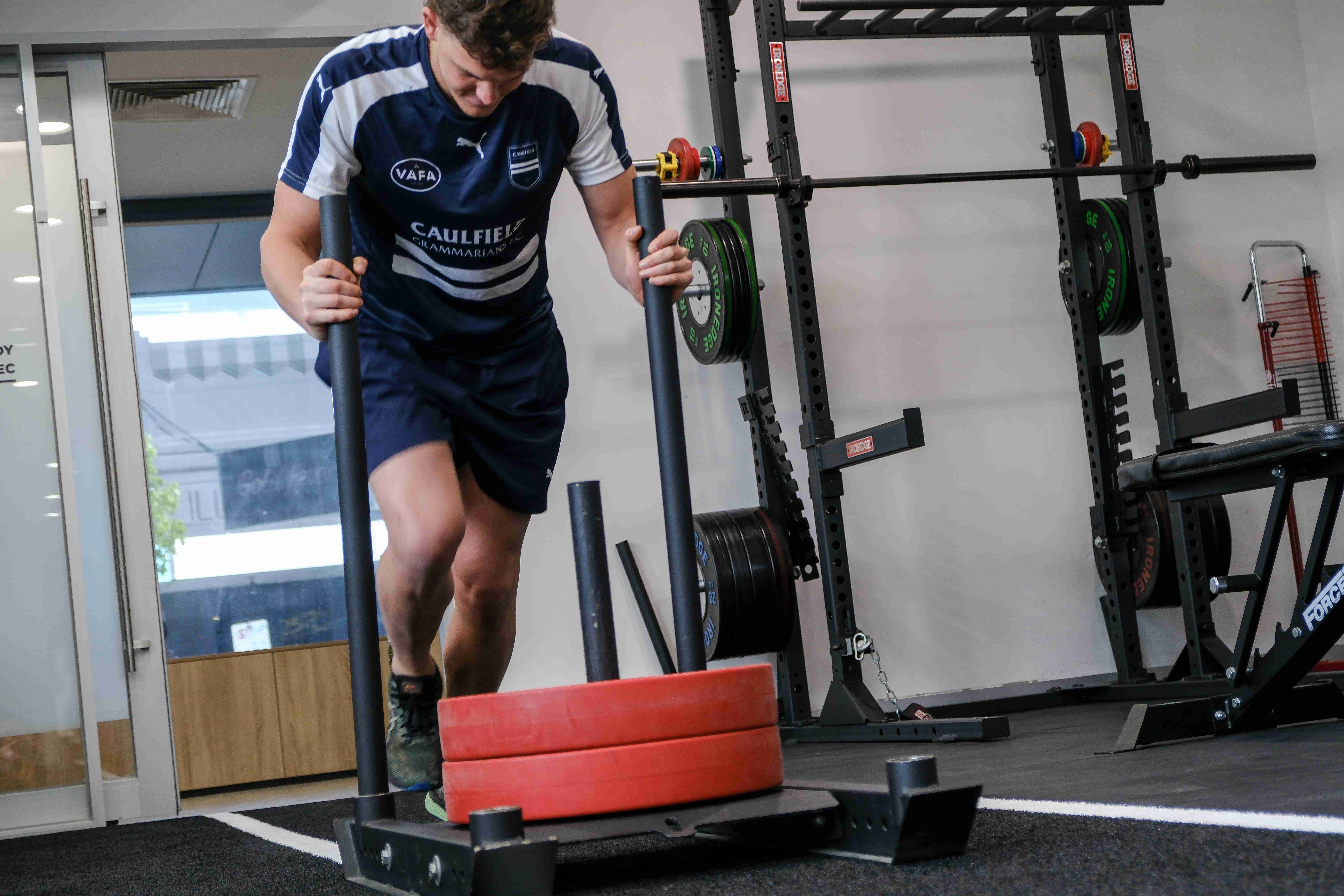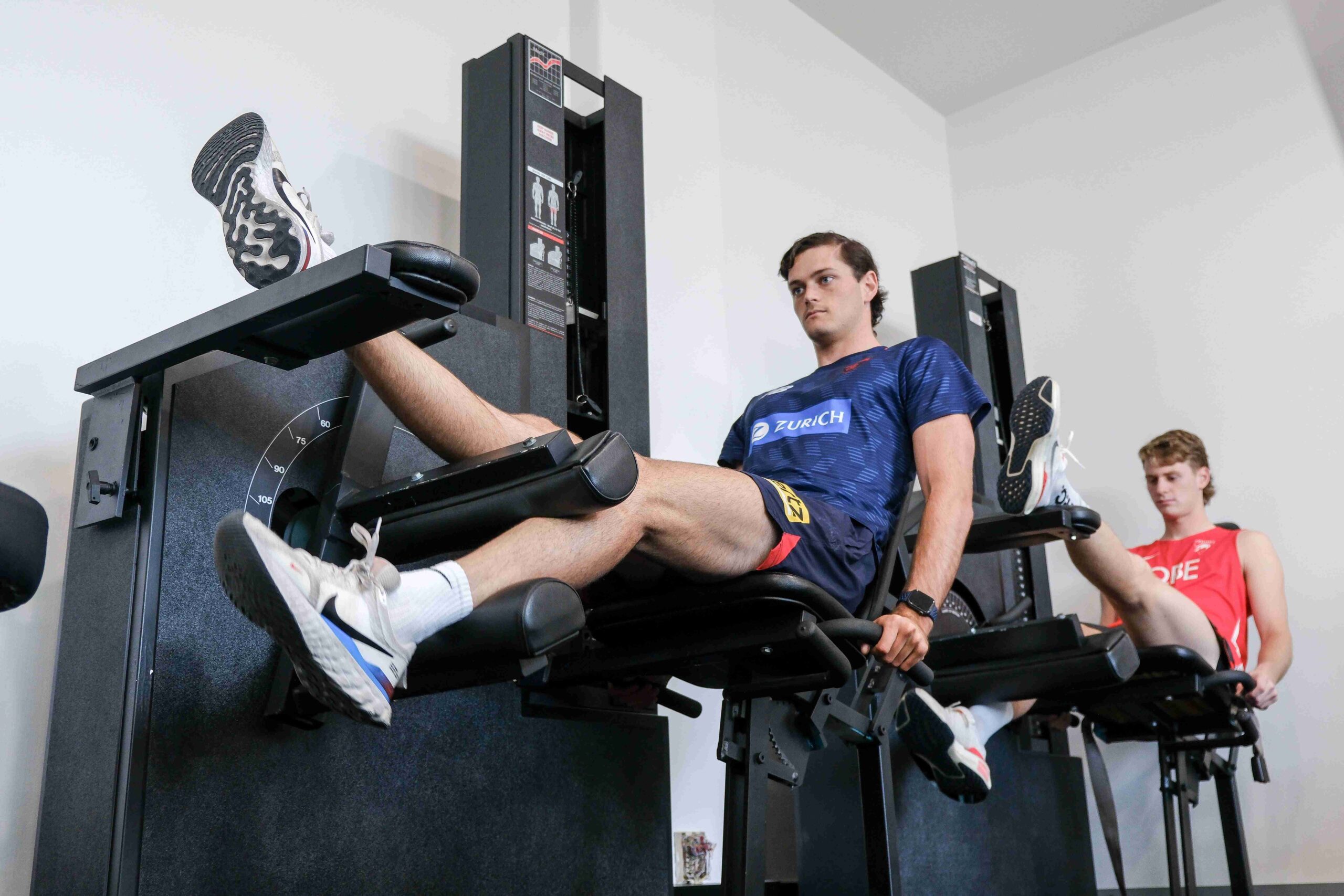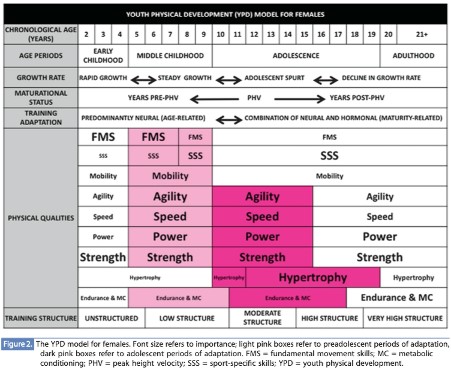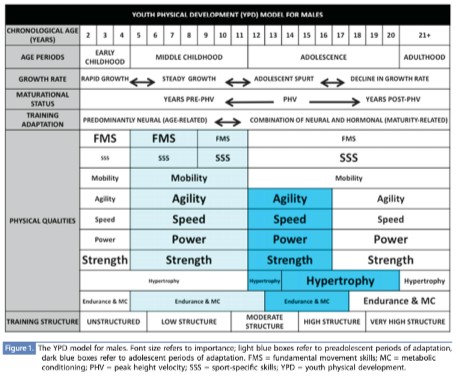Strength and conditioning is a key element of technical training for mature athletes, and there has been much debate about whether weights or resistance training is appropriate for the developing young athlete. The current position on youth resistance training is that a properly designed and supervised training program is safe and can help strength, prevent injury and enhance motor skills and performance of that athlete.
Over the last 25 years, several studies have shown that pre-adolescent children are capable of safely improving muscle strength with appropriate training regimes with studies demonstrating up to 30% gains in strength as a result of resistance training over an 8-12 week period (Falk & Tenenbaum, 1996). It is known that strength increases two fold between the ages of 7-14, with averages even higher in boys. Therefore some would argue that failure to start appropriate resistance and biomechanical training before 16 may be detrimental to not only the development and success of that athlete, but also longevity. These findings have implications for performance enhancements, but even more importantly for injury prevention of young athletes.

The most common of adolescent injuries such as apophysitis and tendon related injuries (eg. severs and osgood schlatters), can be the results of excessive volume of training and competition, lack of stability and strength as well as incorrect or poor biomechanics. The growing athlete is particularly susceptible to such injuries as osgoodshalatters and sever’s when there is a mismatch between flexibility and muscle-tendon strength.
Of greater concern is the potential damage to growth plates of long bones. In these studies where such injuries were recorded, poor technique, excessive loading and repetition of jerky/bouncy activities with a lack of stability and strength were identified as the contributing factors. With the correct implementation and supervision of resistance and biomechanical training, it will encourage healthy bone growth.
In a growing number of cases today it would appear that the musculoskeletal system of young athletes is ill equipped to handle the demands of the practice, games and tournament schedules they are currently undertaking. If we are to keep getting great results as the athlete matures, we need to invest the time and money into long-term development of the adolescent to not only encourage long term success but more importantly to prevent injury.
YOUTH PHYSICAL DEVELOPMENT MODEL:
Large amount of evidence indicates that enhancing physical abilities of children throughout childhood and adolescence aids in maximising athletic success at adult age. The Youth Physical Development (YPD) Model takes into consideration the maturational status of the child and offers a more strategic approach to athletic development of youth. This is calculated through the use of peak height velocity and peak weight velocity to calculate youths’ maturation rate. PHV can help to view a youths performance development in relation to their growth spurt as it is the maximum velocity of growth in height.

Here at Team Elite Physio, we utilise the Youth Physical Development Model at the core of our practice to ensure all children are correctly trained dependent on their maturation.
Extensive research has shown that children can safely and effectively participate in strength training when prescribed and supervised by qualified professionals. Numerous studies indicates that resistance training in children/adolescents does not stunt growth and in contrast improves bone mineral density thus reducing osteoporosis risk in the future. Additionally, weight training and lifting has reduced injury rates of 0.0017 and 0.0035 injuries per 100 hours, compared to sports such as football/basketball and athletics with an injury rate of 6.2, 1.03 and 0.57 per 100 hours. Youth athletes’ injuries whilst weight lifting occurs due to a lack of supervision, thus further supporting the importance of supervised weight training.
The YPD model suggest the greatest window of opportunity for strength development in youth occurs 12-18 months after peak height velocity and peak weight velocity. This is due to adolescents having rapid muscle mass increase during this time. By engaging neuromuscular training or strength training during this period can heighten an individual’s ceiling for performance potential. Resistance training allows for improvement in motor skills, overall health and wellbeing, strength, power, speed, agility, movement skills, muscular endurance and thus improves overall sports performance.
Lloyd, R. and Oliver, J., 2012. The Youth Physical Development Model. Strength & Conditioning Journal, 34(3), pp.61-72. doi: 10.1519/SSC.0b013e31825760ea


Experience the best in pediatric physiotherapy and physio treatments at Team Elite Physio, serving Sandringham and Brighton East.


